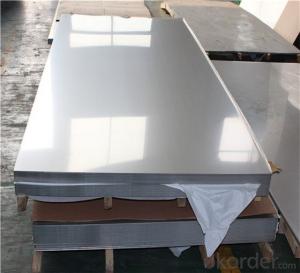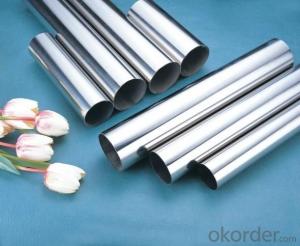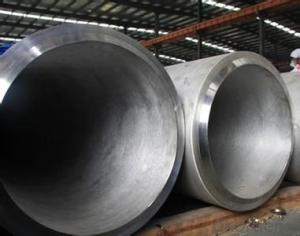Tig Weld Stainless Steel
Tig Weld Stainless Steel Related Searches
Best Paint For Stainless Steel Blanket Insulation For Steel Buildings Primer For Galvanized Steel Foam Filter For Stainless Steel H S Code For Stainless Steel Surface Grinding Wheels For Stainless Steel Surface Grinding Wheels For Hardened Steel Hole Saw For Stainless Steel Paint For Stainless Steel Stainless Steel For BbqHot Searches
Steel Mesh Panels For Sale Price For Stainless Steel Scrap Scrap Price For Stainless Steel Price For Stainless Steel Stainless Steel Tank For Sale Stainless Steel Sheets For Sale Cheap High Tea Sets For Sale Stainless Steel Tanks For Sale Stainless Steel For Sale High Density Fiberboard For Sale Solar Hot Water Collectors For Sale Scaffolding For Sale In Uae Scaffolding For Sale In Ireland Scaffolding For Sale In Houston Type Of Inverter For Solar Price Of Shipping Containers For Sale Types Of Inverter For Solar Stock Price For Aluminum Used Solar Inverter For Sale Steel Mesh Panels For SaleTig Weld Stainless Steel Supplier & Manufacturer from China
Okorder.com is a professional Tig Weld Stainless Steel supplier & manufacturer, offers integrated one-stop services including real-time quoting and online cargo tracking. We are funded by CNBM Group, a Fortune 500 enterprise and the largest Tig Weld Stainless Steel firm in China.Hot Products
FAQ
- Yes, stainless steel sheets are highly suitable for laboratory equipment. Stainless steel is known for its excellent corrosion resistance, making it ideal for use in laboratory settings where chemicals and other corrosive substances are frequently used. It is also easy to clean and maintain, which is crucial for maintaining a sterile environment in a laboratory. Furthermore, stainless steel is durable and can withstand high temperatures, making it suitable for a wide range of laboratory applications. Its strength and resistance to impact and wear ensure that laboratory equipment made from stainless steel can withstand rigorous use and last for a long time. Overall, stainless steel sheets offer a reliable and versatile material option for laboratory equipment.
- To prevent discoloration on stainless steel sheets, it is essential to avoid exposure to corrosive substances, such as salt, bleach, and strong acids. Regular cleaning with mild soap and water, followed by thorough drying, can help maintain the stainless steel's appearance. Additionally, applying a protective coating or using specialized cleaning products made for stainless steel can provide an extra layer of defense against discoloration.
- Yes, stainless steel sheets can be used for power generation equipment. Stainless steel is a versatile material that offers several beneficial properties for power generation applications. It has excellent corrosion resistance, which is crucial in environments where the equipment is exposed to water, steam, or other corrosive substances. Stainless steel also has high strength and durability, making it suitable for withstanding the high temperatures and pressures typically found in power generation systems. Additionally, stainless steel is a good conductor of electricity, making it suitable for electrical components and connections within the equipment. Therefore, stainless steel sheets are commonly used in the construction of power generation equipment such as turbines, boilers, heat exchangers, and exhaust systems.
- To remove scratches from mirror-finish stainless steel sheets, you can follow these steps: 1. Clean the surface of the stainless steel sheet with a mild detergent and warm water, then dry it thoroughly. 2. Identify the direction of the grain on the stainless steel sheet. The grain usually runs in one direction and appears as faint lines. 3. Using a non-abrasive stainless steel cleaner or a mixture of baking soda and water, gently rub the scratched area along the grain with a soft cloth or sponge. 4. Continue rubbing in a consistent motion until the scratches start to fade. Avoid applying excessive pressure to prevent further damage. 5. Rinse the surface with clean water and wipe it dry with a soft cloth. 6. If the scratches are still visible, you can try using a stainless steel scratch remover or a metal polish specifically designed for stainless steel. Follow the product instructions and apply it to the scratched area following the grain. 7. Once the scratches are no longer visible, clean the surface again with mild detergent and water, then dry it thoroughly to restore the mirror-finish appearance.
- Different shapes can be achieved with stainless steel sheets by employing various processes, including bending, rolling, and welding. The choice of method depends on the desired shape and the thickness of the sheet. To form stainless steel sheets into shapes like cylinders or boxes, bending is commonly used. This involves clamping the sheet between a punch and a die and applying force to create the desired bend. By adjusting the pressure and the distance between the punch and die, the angle and radius of the bend can be controlled. Rolling is another technique used to form stainless steel sheets into curved or cylindrical shapes. This process entails passing the sheet through a series of rollers, which gradually bend the material into the desired shape. The diameter and curvature of the final shape can be altered by changing the spacing and alignment of the rollers. For more complex shapes, welding is often combined with bending or rolling. Multiple stainless steel sheets are joined together using heat and pressure to create the desired form. This enables the creation of intricate shapes, such as cones or irregular geometries. In addition to these methods, specialized equipment like hydraulic presses or hydroforming can be employed to shape stainless steel sheets. These techniques involve applying high pressure or fluid pressure to the sheet, resulting in deformation and the desired shape. It is crucial to note that forming stainless steel sheets necessitates skilled operators and precise machinery to ensure accuracy and quality. Moreover, the properties of the stainless steel, such as thickness and composition, can also impact the feasibility and success of the forming process.
- There are several types of surface treatments available for stainless steel sheets, including mirror finish, brushed finish, satin finish, etched finish, embossed finish, and colored finish. These treatments can enhance the appearance, durability, and corrosion resistance of stainless steel sheets, catering to various aesthetic and functional requirements.
- Yes, stainless steel sheets can be recycled. Stainless steel is a highly recyclable material, and its recycling rate is one of the highest among all materials. When stainless steel sheets reach the end of their useful life, they can be collected and sent to a recycling facility. The recycling process involves melting down the stainless steel sheets and reforming them into new products, without losing their properties or quality. This makes stainless steel a sustainable and environmentally friendly material choice. Recycling stainless steel also helps to conserve natural resources, reduce energy consumption, and minimize waste.
- Yes, stainless steel sheets are generally scratch resistant. Stainless steel is known for its durability and resistance to scratching, making it a popular choice for various applications. However, it is important to note that while stainless steel is resistant to most scratches, it is not completely scratch-proof. Deep or abrasive scratches can still occur, especially if the surface is exposed to harsh or abrasive materials. Regular maintenance and care, such as avoiding the use of abrasive cleaners or scrubbing pads, can help minimize the risk of scratches and maintain the appearance of stainless steel sheets.















































